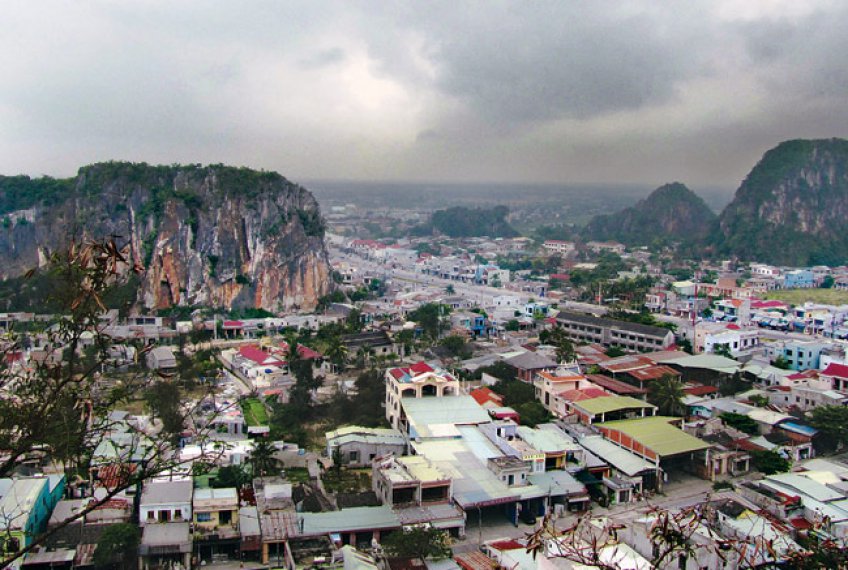Exploring the Marble Mountains

If you’re traveling the central coast region of Vietnam, there are a few must visit sites to explore. Da Nang City- the country’s biggest up and coming tourist destination, the wildly popular ancient town of Hoi An, the ancient religious capital of the Cham Kingdom (My Son Sanctuary) and a set of outstanding hills tucked into the idyllic coastline.
Often mistaken as just “Marble Mountain,” this Quang Nam attraction is actually called Ngu Hanh Son or Five Elements Mountains. A collection of 5 limestone & marble hills, each landmass is named after a specific element: Kim (Metal), Thuy (Water), Moc (Wood), Hoa (Fire) and Tho (Earth). While each cluster has caves and tunnels worked into their interior, only the largest (Son Thuy) is accessible to visitors.
While the sight of the “mountains” is quite extraordinary for visitors to see (standing in stark contrast to the flat coastline), it’s often the inside and summit of Son Thuy that attracts tourists and domestic pilgrims. A set of stairs climbs to the peak of the cluster with a number of caves, grottoes, religious temples and natural attractions leading the way. At the peak of the 500 meter landmass (after climbing a considerable number of stairs) visitors will find a gorgeous panoramic view of Da Nang, Hoi An and Non Nuoc- more popularly known as China Beach (the coastline running along Da Nang into Hoi An).
The Marble Mountains & History
Built into the largest mountain, visitors will find ancient Buddhist sanctuaries (attracting a number of domestic pilgrims) including the Tam Thai Pagoda, dating all the way back to the early 1800’s. The Marble Mountains are not only famous for their religious significance, but also their wartime history. During the American/Vietnam War, it is said that the Viet Cong soldiers hid out and established hospitals inside the caves of the mountains… only a short distance away from the American Air Facility.
The Marble Mountains Today
Another thing that made the Marble Mountains a local attraction was the local craft of stone cutting. Marble was extracted from the mountains and chiseled into beautiful works of art. Still practiced today, visitors can see these incredible sculptures surrounding the mountains, sold both domestically and internationally (though the marble no longer comes from these mountains due to local restrictions).
For those looking to explore the Marble Mountains, expect to bring a good pair of walking shoes, your camera (for the incredible caves and panoramic views) and a small amount of money for entrance fees and basic souvenirs. Another local tip is to arrive early or late in the afternoon- the best way to avoid the Central Vietnam heat and the large crowds that may be visiting on group tours. Visitors should expect to spend around a half day (3-4 hours) touring (including transport to and from the mountains).


.jpg)




